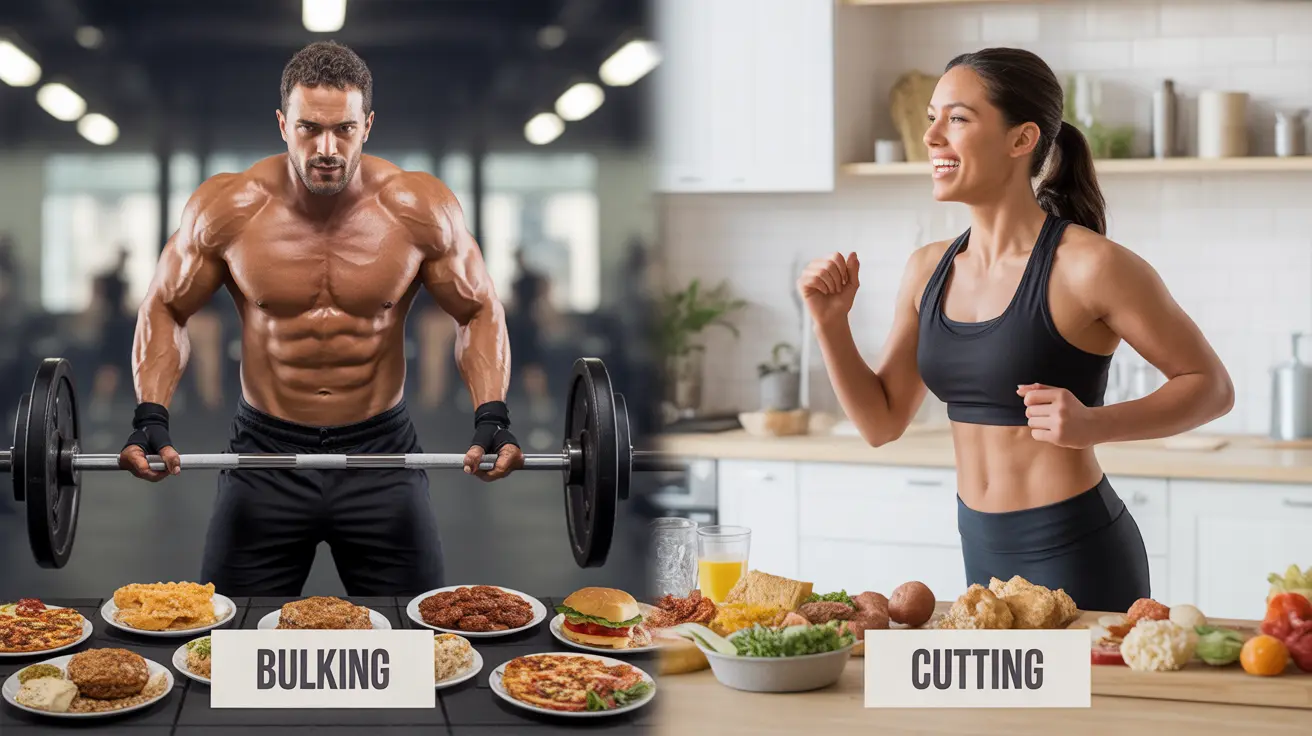For fitness enthusiasts and bodybuilders, understanding the difference between bulking and cutting phases is crucial for achieving specific body composition goals. These two distinct approaches to diet and exercise serve different purposes: bulking focuses on building muscle mass, while cutting aims to reduce body fat while preserving muscle tissue.
In this comprehensive guide, we'll explore the key differences between bulking and cutting, help you determine which phase is right for you, and provide evidence-based strategies for success in either approach.
Understanding Bulking: Building Muscle Mass
Bulking is a strategic approach to gaining muscle mass through a calculated surplus of calories combined with progressive resistance training. During a bulking phase, you intentionally consume more calories than your body burns to provide the extra energy needed for muscle growth.
Key Components of a Successful Bulk
- Progressive overload in strength training
- Caloric surplus of 10-20% above maintenance
- Adequate protein intake (1.6-2.2g per kg of body weight)
- Sufficient carbohydrates to fuel workouts
- Regular rest and recovery periods
Understanding Cutting: Preserving Muscle While Losing Fat
Cutting involves creating a caloric deficit while maintaining high protein intake and continuing resistance training to preserve muscle mass. The primary goal is to reduce body fat percentage while minimizing muscle loss.
Essential Elements of an Effective Cut
- Moderate caloric deficit (20-25% below maintenance)
- High protein intake to preserve muscle mass
- Strategic carbohydrate timing around workouts
- Increased cardiovascular activity
- Proper sleep and stress management
Choosing the Right Approach for Your Goals
Your current body composition, training experience, and fitness goals should determine whether you start with a bulking or cutting phase. This decision can significantly impact your long-term success in achieving your desired physique.
When to Consider Bulking
- You're naturally lean or underweight
- You have limited muscle mass
- Your primary goal is strength gains
- You have good insulin sensitivity
When to Consider Cutting
- You have a higher body fat percentage (>15% for men, >25% for women)
- You want to improve definition and visibility of existing muscle
- You're preparing for a specific event or competition
- You've completed a successful bulking phase
Important Considerations for Both Phases
Whether bulking or cutting, certain principles remain consistent for optimal results:
- Maintain proper form during exercises
- Track progress through measurements and photos
- Adjust nutrition and training based on results
- Prioritize recovery and sleep
- Stay consistent with your approach
Frequently Asked Questions
What is the difference between bulking and cutting in terms of diet and exercise?
Bulking involves eating in a caloric surplus while following a progressive resistance training program to build muscle mass. Cutting requires maintaining a caloric deficit while continuing strength training and possibly adding cardio to preserve muscle while losing fat. The main dietary difference is caloric intake: surplus for bulking, deficit for cutting.
How do I know if I should start with a bulking or cutting phase based on my body composition and goals?
If you're relatively lean (below 15% body fat for men or 25% for women) and want to build muscle, start with a bulk. If you're carrying excess body fat and want to improve definition, begin with a cut. Consider your current strength levels, training experience, and aesthetic goals when making this decision.
What are some common nutritional strategies for maintaining muscle mass during a cutting phase?
Key strategies include maintaining high protein intake (1.6-2.2g per kg of body weight), timing carbohydrates around workouts, using a moderate rather than severe caloric deficit, and including essential fats in your diet. Regular protein feeding throughout the day helps preserve muscle mass during the cut.
Can I gain muscle while cutting, or is it better to focus on bulking first?
While it's possible to gain some muscle while cutting, especially for beginners or those returning to training, it's generally more effective to focus on one goal at a time. Bulking provides optimal conditions for muscle growth, while cutting prioritizes fat loss while maintaining existing muscle.
What are the potential health risks associated with alternating between bulking and cutting phases?
Potential risks include metabolic adaptations, hormonal imbalances, disordered eating patterns, and psychological stress. To minimize these risks, use moderate approaches to both phases, avoid extreme caloric surpluses or deficits, and maintain consistent exercise habits throughout both phases.




